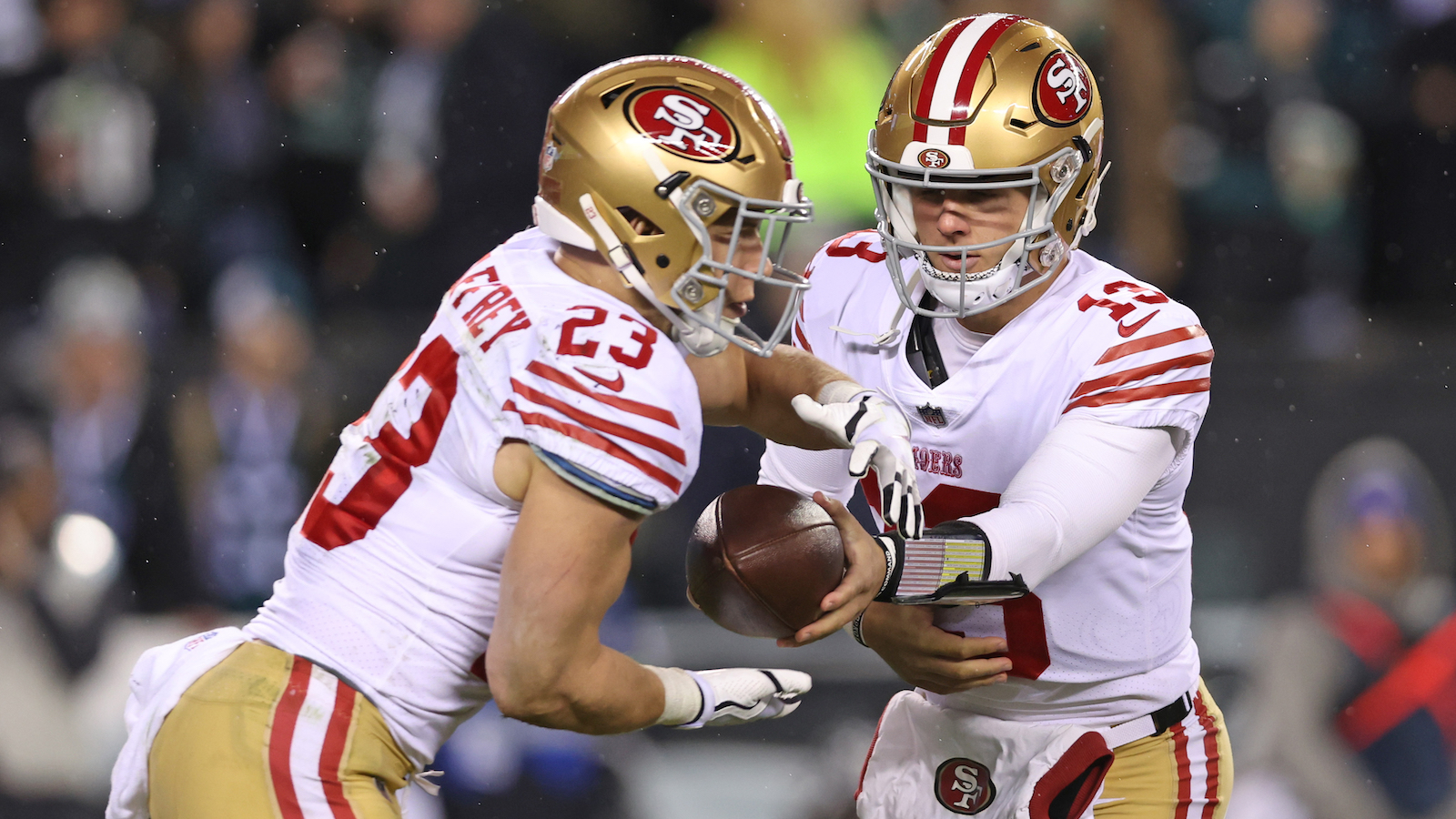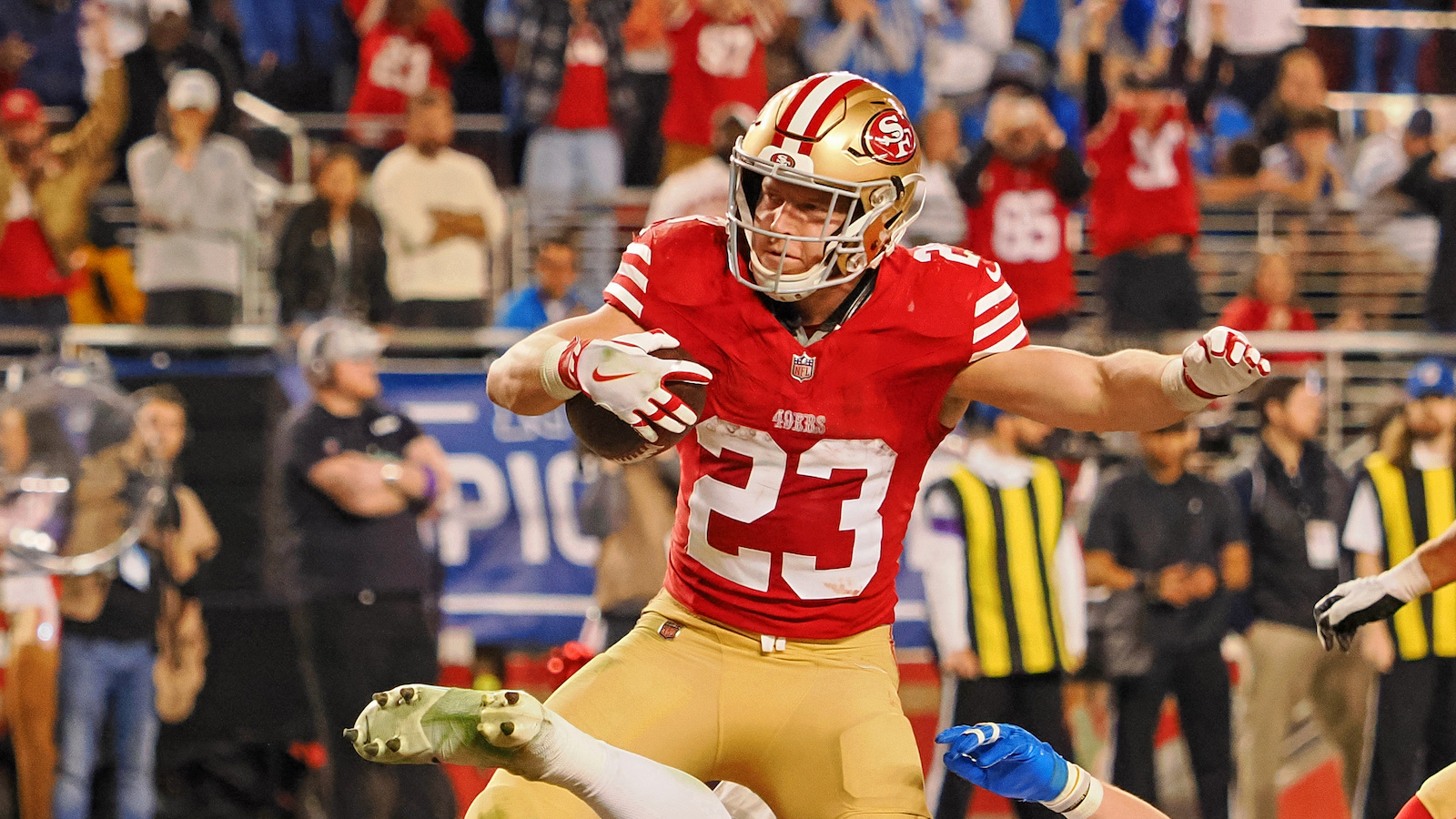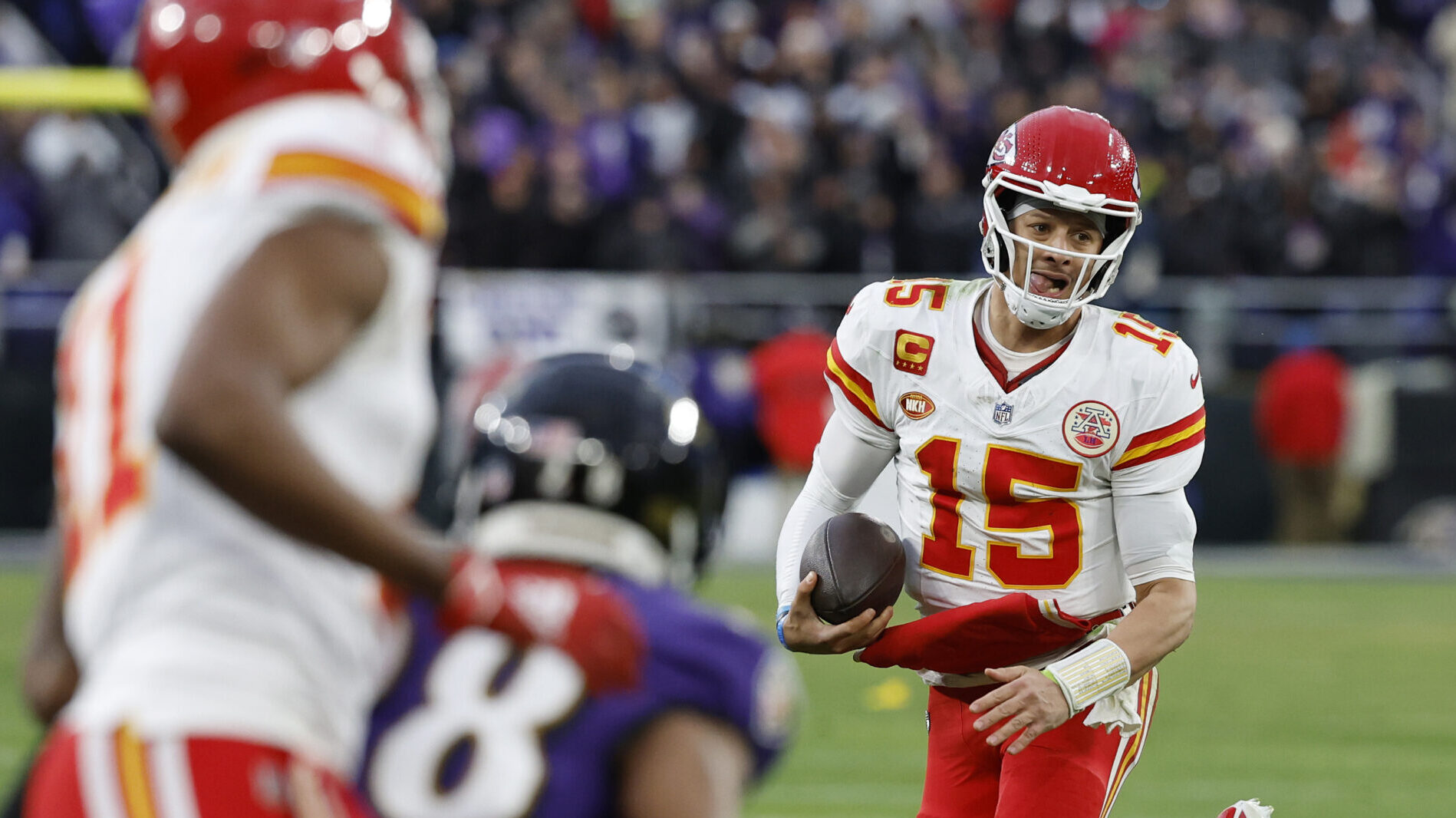Analysis
11/10/22
6 min read
Expert Strategy for Playing Second Half Entries on Underdog Fantasy
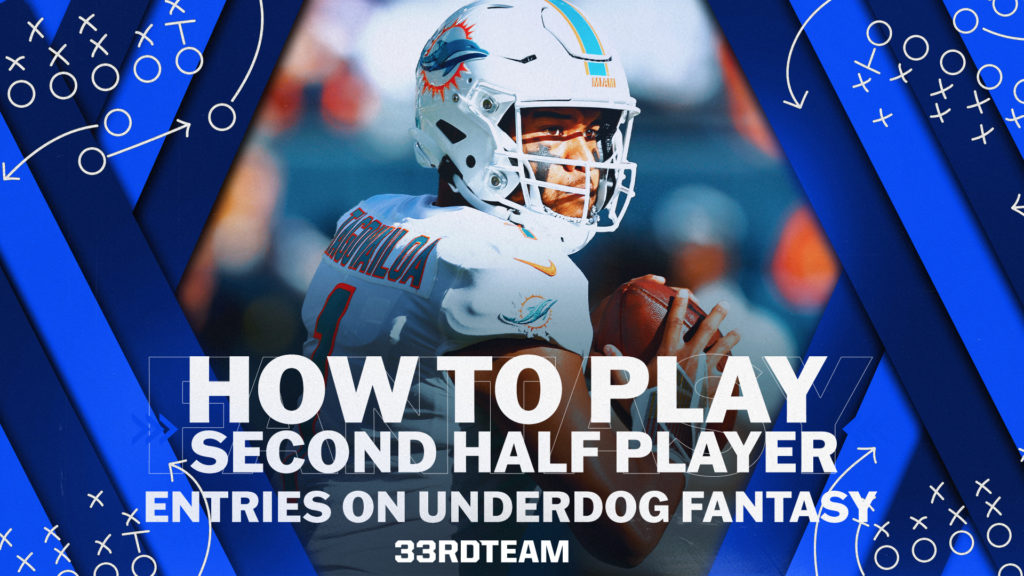
One of the new features that Underdog added to pick’em contests this NFL season was player entries for only the second half. I have been playing these aggressively this season, and they have turned out to be highly profitable if you know what you’re doing. I created a set of rules I have been following that has helped me pick these entries correctly at nearly an 80% rate some weeks. However, one of the hardest things about these player entries is that they are not up for a while. Usually, they are only up for around 10 minutes during halftime, so instead of posting props weekly, I have decided to share my process with you.
Rule No. 1: Game Script Over Everything Else
Before the game starts, we can only predict how a game will go. You see it a lot in individual player and fantasy football analysis, and I talk about game scripts often in my weekly player prop articles. That is all just a prediction, though. That is the amazing thing about playing second-half entries; we already know how the game is going. Based on the score at halftime, we know if teams will need to pass more in the second half because they are trailing or if a team is leading and will run the ball more.
Rule No. 2: Forget the First Half Yardage Totals
Tua Tagovailoa had 253 yards passing in the first half of Week 8. He was losing to the Lions at halftime. Both of those facts mean he should continue passing a lot in the second half and finish with over 500 yards passing, right? Well, he only passed for 129 yards in the second half and didn't even reach 400 total yards passing for the game.
I like to think of rule No. 2 as an extension of rule No. 1. You have to remember that the goal of the second half is to finish in the lead. Teams will not take unnecessary risks if they are in the lead. So, continuing with our example from above, there was no reason for the Dolphins to be as pass-heavy once they got the lead. This makes second-half props much more predictable than anything else because we know the team’s goal is to win the game.
Rule No. 3: Attack Yards Passing First
Below is the chart I made this offseason using data from TruMedia. It is incredibly simple. It is the average yards passing per game for quarterbacks based on the score difference at halftime:
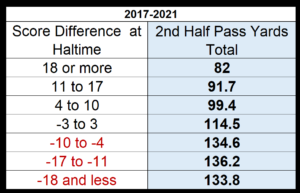
Using this chart as a reference, I have identified player projections that seem to be off. As a rule of thumb, I usually only place an entry if it is 10 or more yards different from the pass yards total from my chart.
Let’s keep using the Tua example from earlier. He was down three points at the half. I see, historically, that quarterbacks have passed for 114.5 pass yards when down by three points. I then checked Underdog and saw his entry projection as 150.5 pass yards. That was a significant difference from the historical data, so I smashed a fewer-than-entry on it.
Rule No. 4: Know When a Quarterback Doesn’t Follow the Chart
There are a few exceptions to the chart above, and they’re pretty easy to remember. First is that quarterbacks in run-heavy offenses — think Justin Fields and Marcus Mariota — will almost always be under the projection the chart provides. Elite passing quarterbacks, my list includes Justin Herbert, Patrick Mahomes, and Josh Allen, are almost always going to be over the projection on the chart. What do we do with these players’ lines? Check out Rule No. 5.
Rule No. 5: If a Yards Passing Line Isn’t Good, Consider the Top Receiver in that Offense
Underdog is usually sharp, and most lines will not be as obvious as in the Tua Tagovailoa example. However, there are times when you know the team will be in an obvious passing situation, but the projection for the quarterback is too close to the yardage given on the chart. In these instances, I strongly suggest playing a higher-than-entry on the top receiver in that offense. For example, let's say the Cardinals are losing by seven, and Kyler Murray’s yards passing entry is within 10 yards of his projection from the table. Instead, I would move to a more-than-entry on yards receiving for DeAndre Hopkins.
One important note is that I have only had success doing this for teams trailing at halftime. Therefore, I would avoid playing lesser than entries on top receivers that are leading at halftime.
Examples from Week 9:
To show you my process in action, here is my strategy for a few player entries I did in Week 9.
The Lions were up eight points over the Packers at halftime. I looked at the chart and saw that Aaron Rodgers should be projected around 134.6 yards passing, and Jared Goff should be around 99.4 yards passing. Rodgers was posted at 155.5 yards passing, and Goff was posted at 102.5. Rodgers looked like an excellent less-than-entry, and Goff is too close to call. Because I do not play top receivers in negative game scripts, I move on to the next game to see if I can find another play.
Minnesota was up four points on Washington at halftime. The chart has Kirk Cousins projected for 99.4yards passing and Tyler Heinecke for 134.6 yards passing. Cousins was posted on Underdog at 125.5 yards passing, and Heinecke was 143.5 yards passing. Cousins is well above his projection from my chart, so I have found my second entry. Heinecke was a borderline under-entry, but it is within 10 yards, so I decided not to play it.
This entry would have been Aaron Rodgers FEWER than 155.5 yards passing and Kirk Cousins FEWER than 125.5 yards passing. Rogers ended up with 135 yards passing, almost perfectly what the chart predicts, and Cousins finished with 106 yards passing. They do not always work out that perfectly, but my mind has been blown by how incredible this process has been this season. One of the best parts of this process is that it has given me the confidence to hit fewer than entries consistently. Many of the lines posted for second-half yards passing and receiving are heavily influenced by the player’s performance in the first half, which is why rule No. 2 is so important.
Yards rushing have been more difficult to predict correctly, but I hope to have a follow-up article to this one on second-half rushing totals soon. Also, yards passing and receiving have been so easy to predict that I haven't had much of a need to play rushing entries. Good luck with this process; hopefully, it will be as profitable for you as it has been for me!
Watch More: Betting the NFL Week 10


